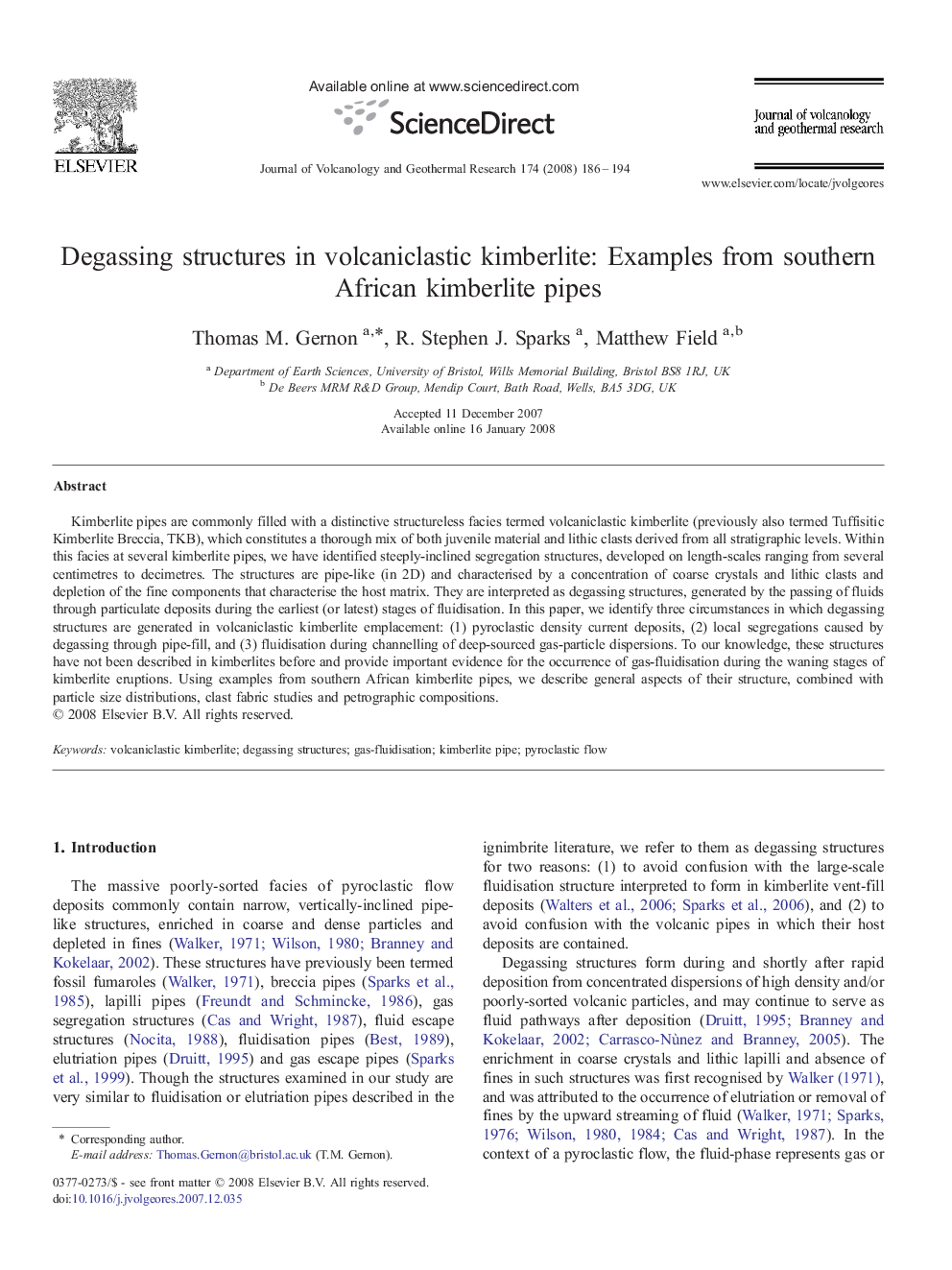| Article ID | Journal | Published Year | Pages | File Type |
|---|---|---|---|---|
| 4714773 | Journal of Volcanology and Geothermal Research | 2008 | 9 Pages |
Kimberlite pipes are commonly filled with a distinctive structureless facies termed volcaniclastic kimberlite (previously also termed Tuffisitic Kimberlite Breccia, TKB), which constitutes a thorough mix of both juvenile material and lithic clasts derived from all stratigraphic levels. Within this facies at several kimberlite pipes, we have identified steeply-inclined segregation structures, developed on length-scales ranging from several centimetres to decimetres. The structures are pipe-like (in 2D) and characterised by a concentration of coarse crystals and lithic clasts and depletion of the fine components that characterise the host matrix. They are interpreted as degassing structures, generated by the passing of fluids through particulate deposits during the earliest (or latest) stages of fluidisation. In this paper, we identify three circumstances in which degassing structures are generated in volcaniclastic kimberlite emplacement: (1) pyroclastic density current deposits, (2) local segregations caused by degassing through pipe-fill, and (3) fluidisation during channelling of deep-sourced gas-particle dispersions. To our knowledge, these structures have not been described in kimberlites before and provide important evidence for the occurrence of gas-fluidisation during the waning stages of kimberlite eruptions. Using examples from southern African kimberlite pipes, we describe general aspects of their structure, combined with particle size distributions, clast fabric studies and petrographic compositions.
